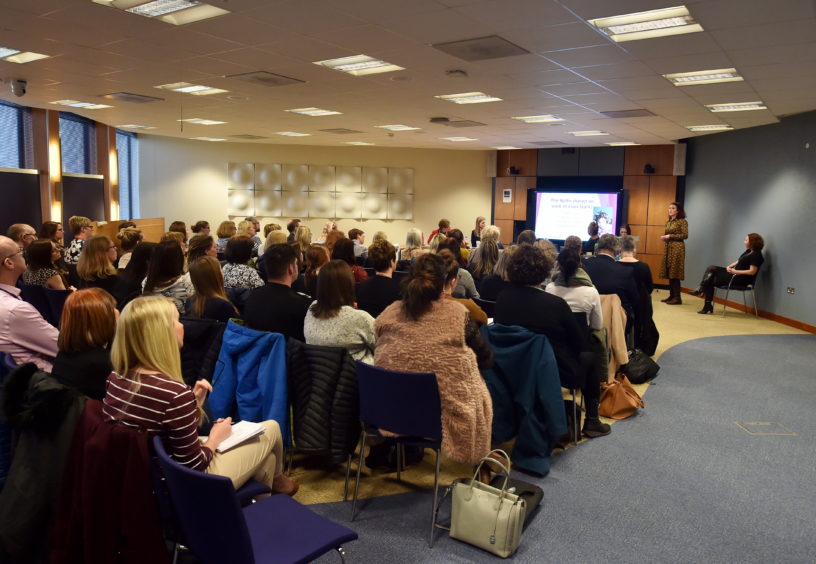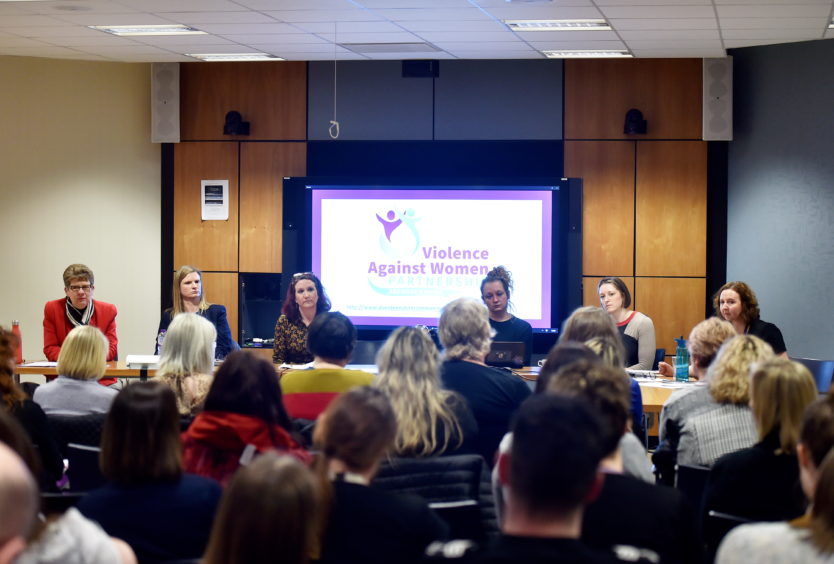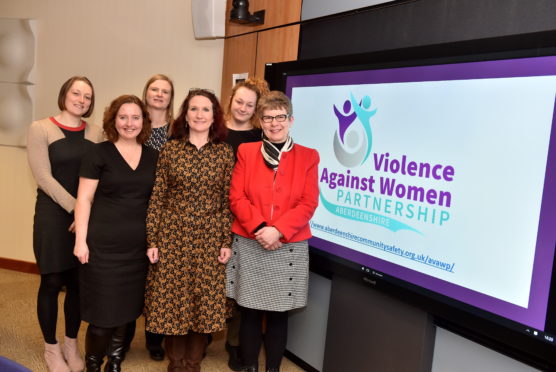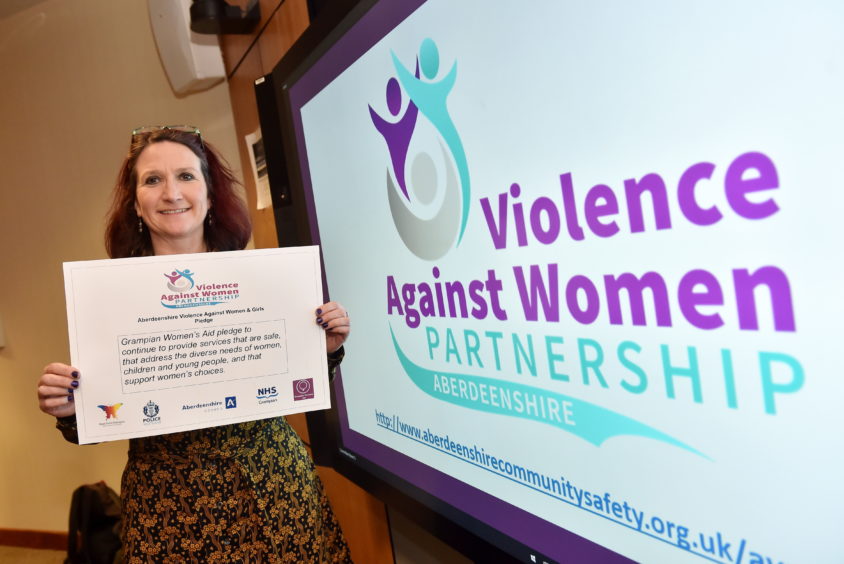Aberdeenshire’s Violence Against Women and Girls Partnership have launched a strategy and action plan to eradicate domestic abuse.
The partnership is part of a national drive to deliver on Equally Safe: Scotland’s strategy for preventing and eradicating violence against women and girls, at a local strategic level.
Representatives from the police, council and charities came together yesterday to launch a new strategy, “shaped by the voice of survivors”, which is aimed at bringing the figures down.
They heard that recent studies have shown that domestic abuse lasts 25% longer on average in rural areas, as help can be harder to reach.

Chairwoman of Rape Crisis Grampian, Arizona Brodie, left many attendees emotional as she spoke candidly about her own experiences of abuse – as a child and as an adult.
She said: “I still have emotional scars, I was in a really really dark place for a long time.
“But I felt I had to stand up to make a difference.
“There were missed opportunities when I was young which is why, now, I feel early intervention is key.”
She added that referrals had increased hugely for Rape Crisis Grampian, with two or three “one-off crisis” appointments now being arranged every week.
Ms Brodie added: “A part of the rise is due to increased awareness.
“But still, domestic abuse is happening all around us and showing no signs of slowing down.
“Last year, 80 of the people we worked with had at some point tried to commit suicide.
“That’s 80 lives almost lost due to an entirely preventable experience.”

Police representatives spoke about the efforts being made to reduce re-offending rates among men, and others spoke about ways of encouraging more people to seek help.
Councillor Alison Evison, President of COSLA who plays a key role in the Aberdeenshire Violence Against Women Partnership said: “”To tackle violence against women, we must tackle the roots and branches of gender inequality. Tackling one aspect alone cannot be effective.”
It is hoped that the multi-agency approach, combining the views of experts and those with lived-experience, will “shine a light on issues usually hidden in darkness”.
Chairwoman of the partnership, Leigh Jolly, said: “Violence against women and girls is underpinned by gender inequality.
“In order to prevent and eradicate it we are working to deliver greater gender equality, tackle perpetrators, and intervene early and effectively to prevent violence.
“The voice of survivors is vital to getting this right. We are grateful to all those who have bravely shared their story to highlight the issue and ensure lived experience informs every aspect of planning, support and service design.”
‘Why don’t you just leave’ is a dangerous question
Alison Hay, development lead from Grampian Women’s Aid, highlighted the challenges in working across Aberdeenshire’s vast rural lanscape.
She said the Captive and Controlled report, which extensively analysed domestic abuse in rural areas in England, was akin to the situation in the north-east.
The report found that abuse lasts, on average, 25% longer in the most rural areas – due to the fact services are much harder to access and societal structures make escape less likely, resulting in victims being half as likely to report their abuse.
Ms Hay added that close-knit rural communities could, in fact, harm the chances of women seeking help.
She added: “Close-knit communities can be absolutely wonderful to live in and to be able to know and say hello to everyone as you walk down your street.
“But this can reduce the chance of women calling the police in abusive situations, or seeking help, if they worry it will be impossible to do so without questioning from the community.
“Without knowing it, the community is facilitating the abuse, allowing the abuser to act almost with impunity.
“’ Why don’y you just leave’ is a dangerous question that I hear again and again.
“Sometimes the threat of leaving can lead to further aggression and more danger for the women and any children.”
Ms Hay explained that the partnership’s multi-agency approach, involving police, charities and support workers, could all help to reach victims in rural areas.
Grampian Women’s Aid take steps to ensure they don’t aggravate situations in any way, asking victims what is the best way to get in touch for example, as phone calls, e-mails or letters could all be a risk.
She added: “Partnership working is vital in tackling all forms of violence against women.”

